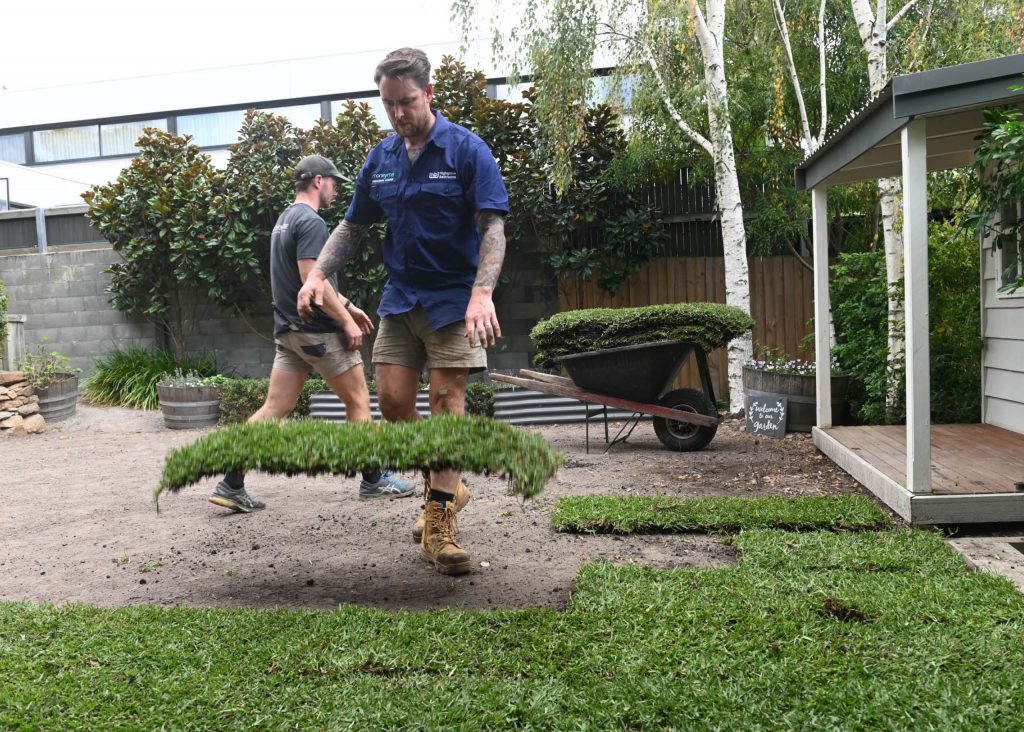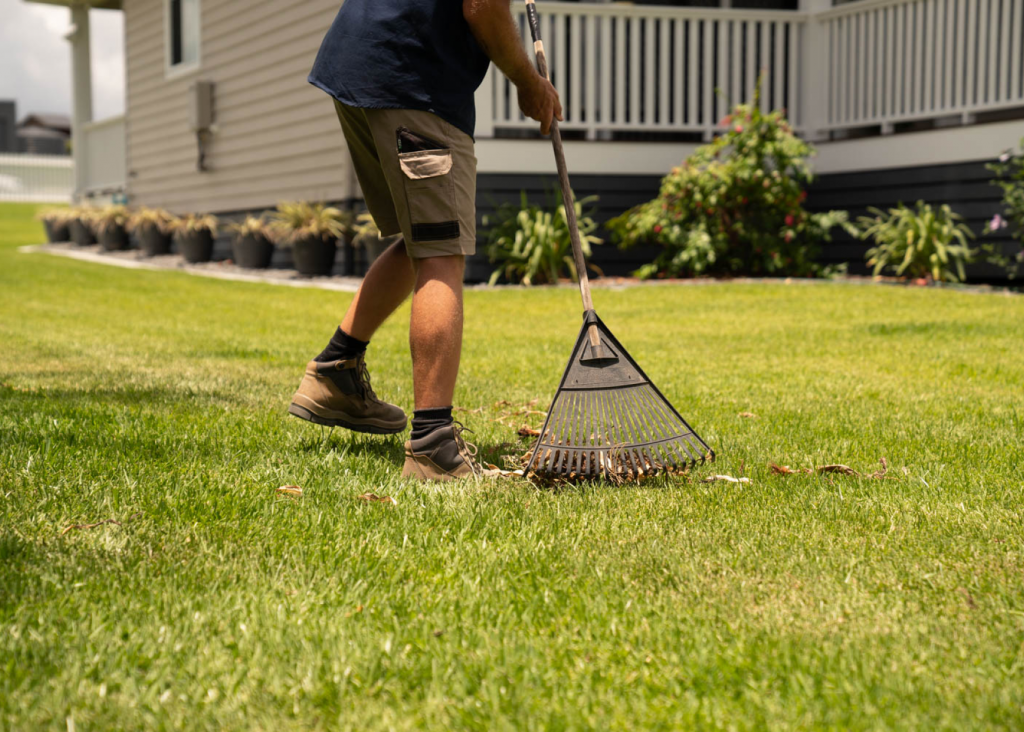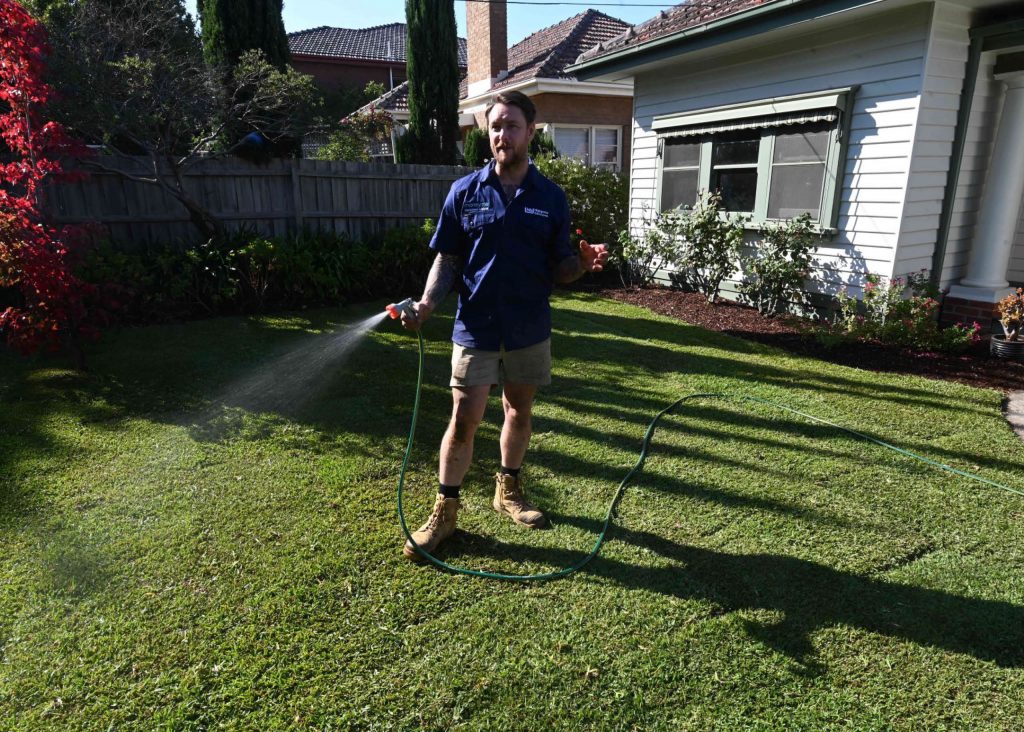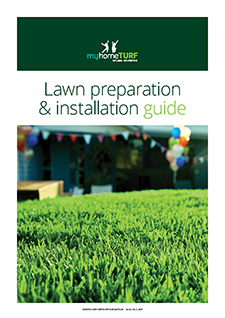7 Common Weeds in Buffalo Grass
Weeds in Buffalo lawns can quickly turn your dream lawn into a nightmare. For Australian homeowners, tackling these invasive plants is essential for preserving the beauty and ...

 The best time of year for laying turf is usually early spring but, depending on where you live in Australia, there’s usually nothing to stop you from laying turf in winter.
The best time of year for laying turf is usually early spring but, depending on where you live in Australia, there’s usually nothing to stop you from laying turf in winter.
Obviously, if there’s snow on the ground, we don’t recommend it because the surface will be too hard to prepare properly, and in all likelihood the turf will fail to establish.
For everyone living outside Alpine areas, which is most of us, read on to learn which seasonal precautions you can take to ensure you have a great new lawn ready to enjoy in summer.
The first consideration when planning to update outdoor areas is the climate. This will affect how you use these areas as well as the types of turf that will be most suitable for your needs.
Think about how many hours a day the lawn will spend in sun and shade.
Also, recognise how much water you can use and how much time you can realistically devote to lawn care and maintenance.
It’s pointless choosing a variety that requires professional levels of attention to look its best, if you’d struggle to mow it more than once a month.
The Ultimate Turf Buyers Guide has tips for choosing turf varieties.
A light frost won’t kill your new grass, but if the area is prone to heavy frosts in winter, it’s wiser to defer laying your new lawn until spring – or at least doublecheck with your turf supplier to see what they recommend.
 Before you start, make sure the site is completely free of weeds. Establishment takes longer in the cooler months – four to six weeks instead of the usual two weeks – so a weed-free environment is best to reduce unwanted competition.
Before you start, make sure the site is completely free of weeds. Establishment takes longer in the cooler months – four to six weeks instead of the usual two weeks – so a weed-free environment is best to reduce unwanted competition.
Prepare the surface by cutting and rolling any existing grass for removal, or raking it, and cover it with a layer of coarse sand followed by a layer of quality topsoil and starter fertiliser.
One of the benefits of laying turf in winter is the water savings. Daytime temperatures usually won’t be hot enough to dry it out as quickly, so the freshly laid grass won’t need as much water or watering as often.
Another benefit is mowing won’t be needed until spring when rising soil temperatures encourage most grasses to start growing again more vigorously.
 Even though less water will be needed when laying turf in winter, it will still require daily watering to stop it from drying out.
Even though less water will be needed when laying turf in winter, it will still require daily watering to stop it from drying out.
The best time to water is early morning or evening, just as you would in summer. Apply enough water to penetrate the turf and reach the soil underneath to encourage root development.
Protect the new turf – especially in shaded areas – from damage by vehicles, foot traffic, pets and garden furniture during the first month when it is at its most fragile.
And wait six to eight weeks before mowing to ensure the roots are firmly established. If you’re not sure, carefully try to lift up a corner. If it holds fast, your lawn is ready for a light mowing. If it comes up easily, it’s not ready so give it another few weeks and try again.
Deciding which turf to lay in winter is no different to choosing a variety to lay at any other time of year.
It all boils down to lawn size, shade and sun tolerance, resistance to wear and weeds, drought and salt tolerance, maintenance, colour and budget.
The Ultimate Turf Buyers Guide has tips for choosing turf varieties.
 Just because it’s cold outside and your lawn might be one of those that goes dormant in winter, doesn’t mean you can skimp on its care.
Just because it’s cold outside and your lawn might be one of those that goes dormant in winter, doesn’t mean you can skimp on its care.
There are some things you’ll need to keep doing to ensure it stays healthy. They include; removing weeds, fertilising, aeration, and lifting the mowing height.
For more information, check out our guide to Winter Lawn Care here
.
Sign up for our Newsletter to receive your free guide.
